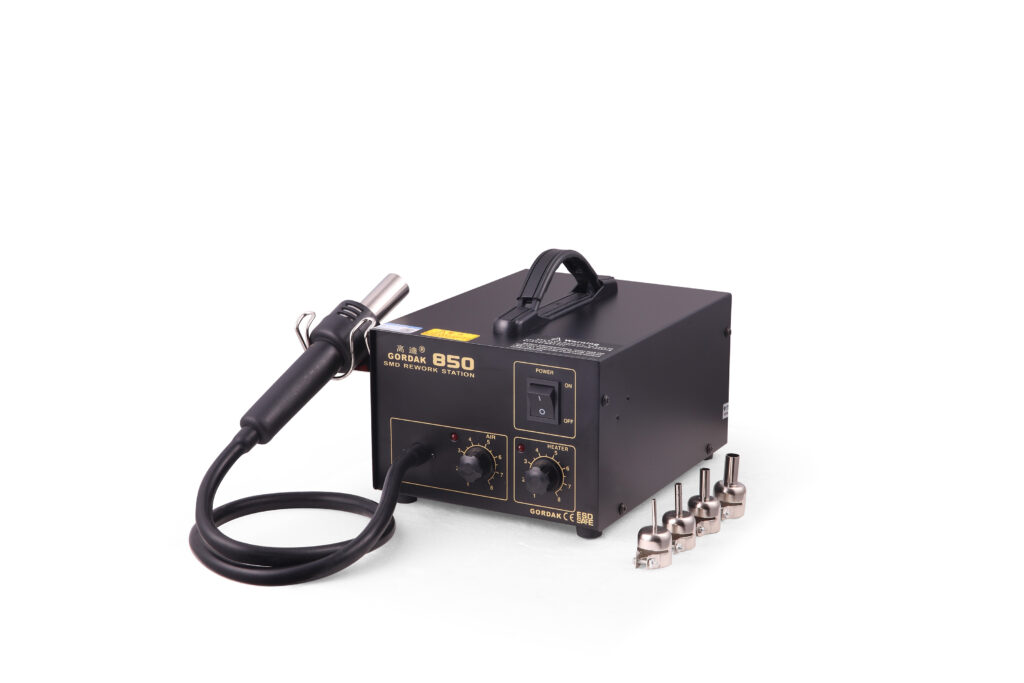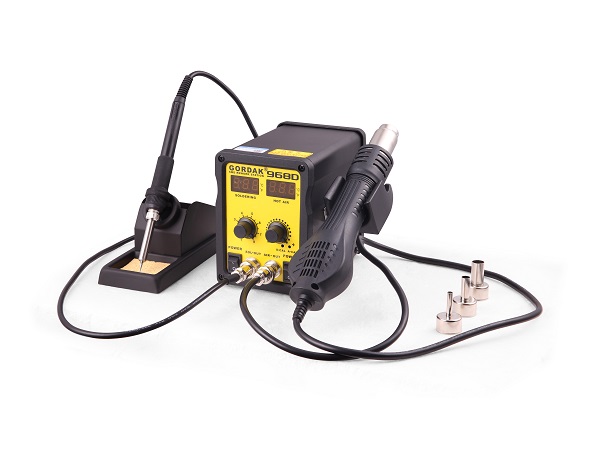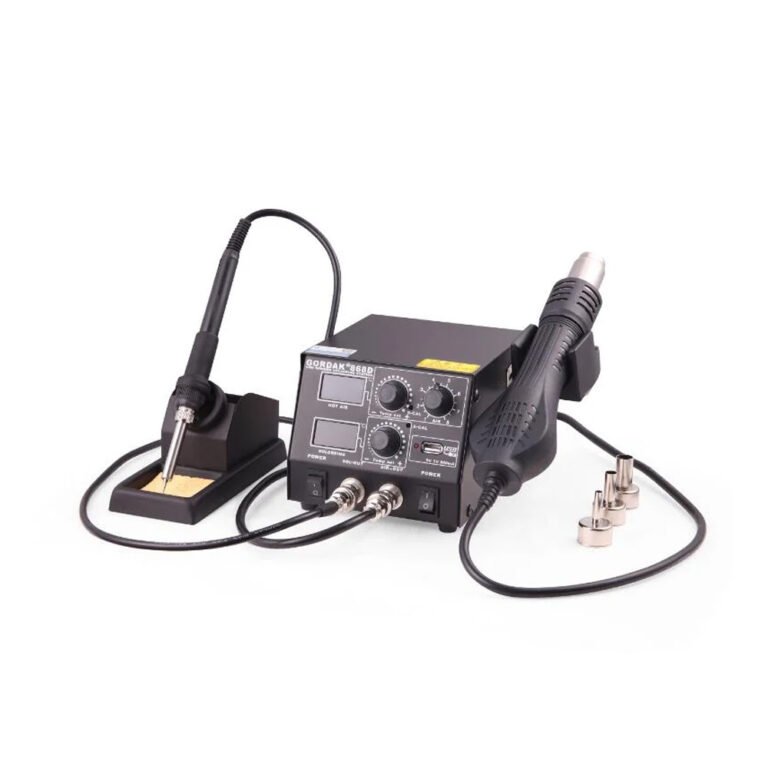在维修或返修表面贴装元件 (SMD) 时,选择正确的返修方法至关重要。两种常用的解决方案是 热风返修站 和 红外线(IR)返修站.这两种技术都很有效,但在加热方式、部件的反应以及对各种应用的适用性等方面存在很大差异。
在 戈尔达克电气公司我们专门制造高性能的 热风返修站 包括以下型号 戈尔达克 850、857D、958D等等。在本文中,我们将进行清晰的比较,帮助您了解每种系统的优缺点,从而为您的维修或组装需求做出明智的决定。
什么是热风返修站?
热风返修站使用受控的加热气流熔化焊料,以便拆卸或更换 SMD 元件。气流和温度通常可以调节,以适应不同的元件类型和 PCB 材料。
流行的 Gordak 型号包括
Gordak 850 / 850A / 850B - 可靠的模拟控制
戈尔达克 857 / 857D - 紧凑、精确
戈尔达克 958 / 958D - 数字控制,智能冷却

什么是红外线返修站?
红外线返修站使用红外线辐射(非接触式加热)来提高元件和周围焊点的温度。它通常使用红外灯或红外辐射器作为热源,是敏感或多层印刷电路板的首选。
热风与红外线:并排比较
| 特点 | 热风返修站 | 红外线返修站 |
|---|---|---|
| 加热方法 | 对流(强制热风) | 辐射热(红外光) |
| 热量分布 | 均匀,可通过气流和喷嘴大小进行控制 | 由于表面反射率的变化,可能会出现不均匀的情况 |
| 精度 | 高,尤其是集中喷嘴 | 中等--受组件颜色和形状影响 |
| 速度 | 快速加热和冷却循环 | 加热反应一般较慢 |
| 设置复杂性 | 简单;即插即用设计 | 需要更高的校准和放置精度 |
| 组件安全 | 如果气流过大,可能会吹走微小元件 | 无气流--更适合小型组件 |
| PCB 兼容性 | 适用于大多数印刷电路板类型 | 更适合热敏或多层印刷电路板 |
| 费用 | 价格更低廉,供应更广泛 | 通常更昂贵 |
| 学习曲线 | 简单易学,适合初学者 | 学习曲线较长 |
| 维护 | 易于清洁和维修 | 需要更专业的护理 |
利弊总结
热风返修站 - 优点
可调节热量和气流
适用于大多数一般 SMD 返修任务
用于不同组件类型的可互换喷嘴
经济实惠,适合初学者
快速加热和智能冷却(如 Gordak 958D)
热风返修站 - 缺点
如果设置不当,气流会使小部件移位
对于热敏性很高或没有预热的多层电路板来说,可能不太理想
红外线返修站 - 优点
无气流,非常适合小型或易损元件
适用于多层和热敏印刷电路板
非接触加热法
红外线返修站 - 缺点
加热速度较慢,精度较低
受元件反射率影响(深色或闪亮表面受热不均)
更昂贵、更难维护
不适合初学者
您应该选择哪一种?
对于大多数电子产品维修专业人员、教育工作者和原始设备制造商技术人员来说 热风返修站 提供了精度、经济性和易用性的最佳平衡。除非您经常使用专门的热敏多层印刷电路板,否则热风法几乎可以满足您的所有需求。
这就是为什么 高达克热风返修站 仍然是 50 多个国家技术人员的首选。

为什么选择高达克电气公司
在 戈尔达克电气公司我们生产的热风返修站耐用、可靠、性能卓越,深受全球用户的信赖。我们的机型具有稳定的温度和气流控制、用户友好的模拟或数字接口、可更换的喷嘴和加热芯,以及适合各种经验水平的高性价比解决方案。无论您是使用 戈达克 850, 857D或 958D我们的工作站可帮助您每次都能实现精确、安全的 SMD 返修。
有关 OEM/ODM 咨询、技术支持或经销商合作,请联系我们:
电子邮件: info@gordakelec.com
热风返修站
Applications of a Hot Air Rework Station: What Can Be Soldered?



